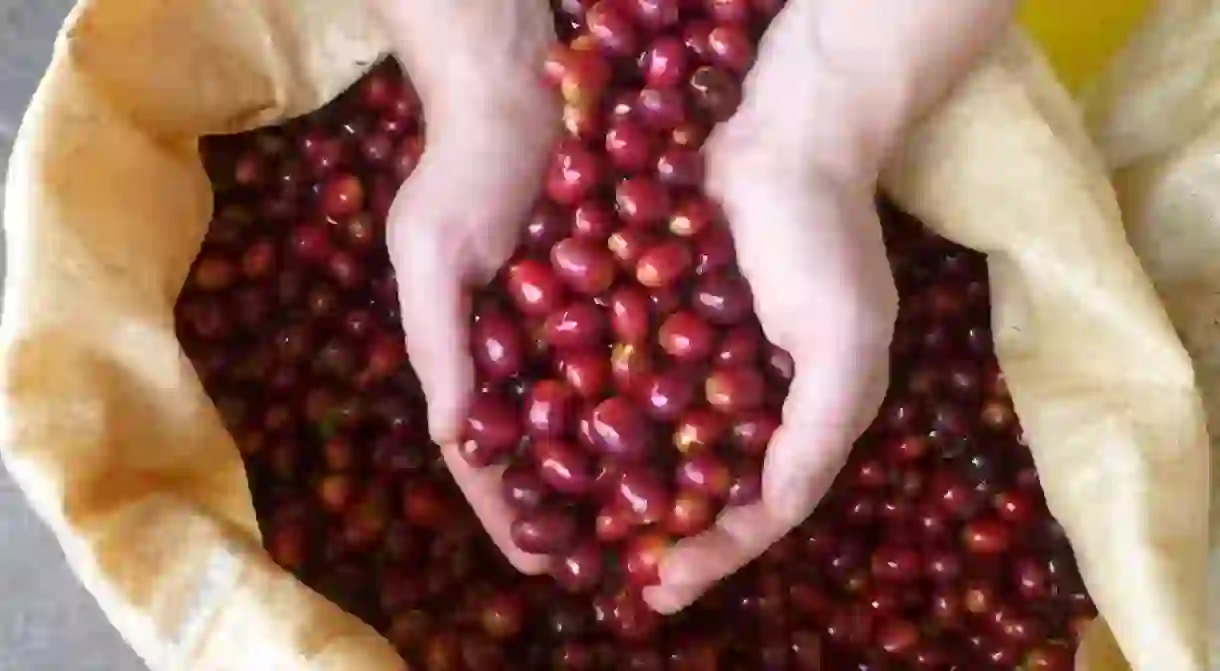Everything You Need To Know About Ecuador's Coffee Industry

Defying the belief that good coffee must grow at altitude, Ecuadorians not only grow coffee along the spine of the Andes but in pockets along the coast, in the low lying Amazon Basin, and even on the Galapagos Islands. As roasters around the United States search for sustainably sourced, small coffee plantations, they are increasingly turning to Ecuador and it is not uncommon to see names like Loja, Zaruma, and Intag appear on bags of beans at your local coffee shop.
History of coffee in Ecuador
Coffee was introduced as a crop in 1860 when plantations were first established in the coastal Manabí Province in the Jipijapa Zone. Ecuador became famous for growing beans that made great instant coffee, still a staple in many Ecuadorian households. While large plantations still exist, recent coffee production is turning to smaller, family run farms and specialty beans.

Regions where coffee is grown
Intag
In the outskirts of Otavalo, bordering the Cotacachi Cayapas Ecological Reserve, lies the Intag Valley. This high Andean farming community specializes in organic Arabica coffee beans grown under the shade of native trees.

Pacto
Only a couple of hours outside of the capital city, Quito, Pacto is known for handmade blocks of panela from fresh sugar cane, ruins of the ancient Yumbo, and coffee production. This area has a large Colombian influence as many coffee workers crossed the northern border in search of jobs.

Loja
Even Ecuadorians say that Loja grows the best coffee in the nation, particularly in the small community of El Airo, not far from the Yacuri National Park. This high altitude region specializes in their own strains of Arabica coffee beans.
Zaruma
Zaruma hits all of the traditional markers for a great coffee growing region: abundant sunshine, heavy rainy season, moderate temperatures, and the ideal altitude around 1000 meters.

Manabí
This coastal province was the first to grow coffee in Ecuador, practicing the slash and burn method of creating coffee plantations by cutting down the local forest and then burning the remaining stumps and vegetation. Today, many sustainable farms are working to replant trees and grow coffee in the shade of native species.
Orellana
The region of Loreto has more than 4,000 small coffee plantations growing the Robusta coffee bean, a variety traditionally reserved for making instant coffees and as an ingredient in many espresso blends. This is a high yield bean with more caffeine than its Arabica cousin.

The Galapagos
Starbucks sells a specialty reserve coffee originating on the island of San Cristóbal in the Galapagos. Coffee is also grown on the most populated island of Santa Cruz. The combination of cool winds arriving with the Humboldt current and the rich volcanic soil makes for a surprisingly great coffee that grows in the unique Galapageño highlands despite their low altitude.














